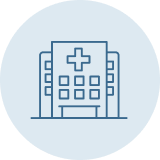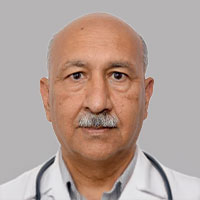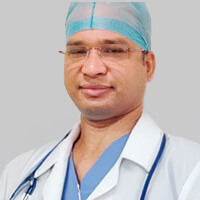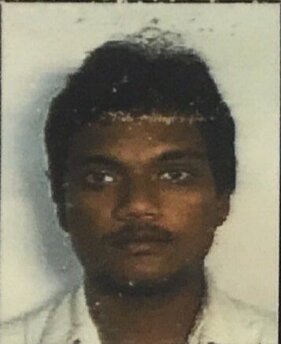Pre-operative Preparation
Gallbladder removal surgery is performed by a hepatobiliary surgeon. These are doctors who have undergone specialized training to perform surgeries pertaining to liver, pancreas and gallbladder. A pathologist may also be part of the surgical team if cancer of gallbladder is suspected. Other medical professionals involved in gallbladder removal surgery procedure are trained nurses. They have to be competent and prepare for the surgery as per the surgeon's specifications. Once the surgeon assembles the team, he/ she proceeds to complete the following pre-operative steps:
- Discussion
Prior to cholecystectomy, the surgeon and patient discuss about surgery, its procedure, post-operative care, pre-operative preparation, risks, recovery time etc. Patient may be asked to submit a consent in which they state that they are undergoing the procedure willingly.
- Investigations
Certain blood tests and other investigations are done prior to gallbladder removal surgery. White blood cell count is checked, and if it is high, some infection is presumed to be present. Surgery is rescheduled till the infection is contained and the count returns to normal. High blood sugar levels are also a strong contraindication for cholecystectomy. They are brought back to normal with medicines after which surgery can be scheduled. Bleeding time and clotting time of the patient's blood are calculated. This helps the surgeon to obtain and idea of the risk of excessive blood loss during surgery. Blood group determination is essential. Blood which matches the patient's group and type is arranged to be used for transfusion in case of massive blood loss. Alternatively, the patient's own blood can be withdrawn and preserved to be used if needed. This is done days or weeks before surgery. An ECG is done to observe for any abnormalities in heart function. X-Ray of chest will help the surgeon to visualize the anatomy of heart and lungs and also to assess respiratory functions.
- Medicines
The patient might be suffering from some other health condition for which some medicines may be prescribed. The patients need to inform their surgeon about all the medicines they take along with the dose of medicine. The doctor might alter the doses of certain medicines which are not suitable to be consumed prior to a surgery. If the patient is on blood thinning medicines, their dose may be reduced or they might be stopped. Additionally, antacids and laxatives may be started for the patient a day or two prior to surgery. Antibiotics may be started before hand, to prevent development of infection after surgery.
These pre-operative measures are for the patient's own safety. They ensure that the patient is healthy to undergo surgery. Any probable obstacle which could occur during surgery can be detected and eliminated.
Day Before Surgery
One day prior to gallbladder removal surgery, patient is advised to get admitted to the hospital. After admission, a thorough physical examination is done to assess normal functioning of all body systems. Blood pressure, pulse rate, breathing and body temperature are monitored at regular intervals. Since one night before surgery, the patient is advised to avoid consuming any food. It is advisable to have an empty stomach and intestines during surgery. General anesthesia is used for gall bladder removal surgery. The patient is completely unconscious throughout the procedure and the entire digestive tract is temporarily paralyzed. A full stomach or intestine could create complications during surgery. Partly digested food from the stomach could regurgitate (come out in the reverse direction) from the esophagus and enter the lungs. This could lead to respiratory complications. One day prior to surgery, patient is advised to get adequate physical rest. Strenuous activity is to be avoided. Patient is advised to abstain from taking any mental stress.
Procedure Day
On the day of surgery, patient is prepared, well before the scheduled surgery time. They are asked to have a bath. Use of very strong soap is not advisable. A surgically suitable loose gown, which has been sterilized to get rid of all microorganisms, is worn by the patient. The patient is taken to the operating room where anesthesia is administered. General anesthesia can be administered in the form of an injection administered inside a vein. It can also be administered through a face mask via nasal route. The patient is positioned to lie flat on the back with both knees and arms straight. This provides good approachability to the abdomen which is to be operated upon. Skin over the abdomen is cleaned by shaving all hair over it. It is cleaned with an antiseptic liquid. Surgery can be started after the anesthetic agents have acted and the patient is completely unconscious.
Methods/Techniques of Gallbladder Removal Surgery
Gallbladder removal surgery or cholecysectomy as it is known, can be done by the old school open method, or the newly developed minimally invasive laparoscopic method. Both methods have their own pros and cons. The procedures have been described below in detail:
- Open Method
The open method is an invasive one and begins with a single surgical incision 4-8 inches long made below the skin covering the rib cage on right side of abdomen. Alternately, a large vertical incision may be made at the center of the abdomen. After the skin has been cut, underlying fat and fascia is removed. Abdominal muscles are separated till the liver can be visualized. The gallbladder is present hidden beneath the liver when the patient is lying flat on the back. Liver may have to be retracted to visualize the gallbladder completely. After it has been isolated, the attachments of the gallbladder to other abdominal structures are carefully cut. Blood vessels which have been accidentally cut are sealed using chemicals or minute electrical currents. The cystic duct is clamped and gallbladder is separated form it. After it is removed, the liver, abdominal muscles which were retracted are returned to their original position. Skin incision is closed with a medically designed thread.
Open surgery has a few disadvantages. Due to a large incision made during the procedure, the risk of bleeding, infection and delayed recovery are increased. But there are a few advantages as well. Certain health conditions like cancer of gallbladder, portal hypertension (increased pressure of the blood in the vessels inside liver), severe inflammation of gallbladder, necessitate open cholecystectomy only. It is risky to perform a laparoscopic surgery if these conditions are diagnosed. The procedure lasts for about 1-2 hours
- Laparoscopic method
A newer method as compared to open method, laparoscopic cholecystectomy is a minimally invasive surgery. As opposed to open surgery, this method involves the use of smaller and multiple incisions over the abdominal wall. After the incisions are made, the surgeon inserts a video camera attached to a long tube, known as a laparoscope inside through one of the incisions. Surgical equipment is inserted inside through the other incisions. Further process remains the same as the open surgery.
After the gallbladder has been extracted, the surgeon will close all surgical incisions. Since the incisions are very small, they heal faster and do not leave permanent scars. The risk of accidental damage to any blood vessel or other organs while making the incision is minimized. Because there is minimum exposure of the abdominal organs, risk of infection also reduce greatly. However, many a times, laparoscopic surgery fails to show success. In such cases, the surgeon may have to proceed to the open method to remove the gallbladder. The procedure lasts for about 45 minutes
Both the methods vary slightly in the way they are performed; however, end result is same in both the procedures. If there is suspicion of cancer, then the gallbladder can be sent for pathological examination. After the surgery, there is a recovery period of about 4-6 weeks during which patient has to take utmost care of their health. Recovery period is shorter after laparoscopic surgery.
Pristyn Care’s Free Post-Operative Care

Diet & Lifestyle Consultation

Post-Surgery Free Follow-Up

Free Cab Facility

24*7 Patient Support
Post Procedure
After the gallbladder removal surgery is over, the patient is still unconscious. They will be transferred to a recovery room. After sometime, when the effects of anesthesia wear off, the patient regains consciousness. They are retained in the hospital for a day or two and placed under observation.
- Hospital Stay After Surgery
Soon after the patient becomes conscious after surgery, they will undergo a thorough physical examination. The abdominal incisions are inspected for any abnormal signs. They are covered with cotton and gauze. The patient is hospitalized overnight after which they are discharged to go home. Prior to that they are provided with care instructions which they are expected to follow.
- Medicines
After surgery, the patient may be given a course of antibiotics to prevent development of infection at the site of infection. Pain killers may be prescribed to the patient in case they experience pain at the site of surgical incision.
- Physical Activity
The patient is advised to refrain from strenuous physical activity during the recovery period. It is inadvisable to do vigorous exercises, specially those which put a strain on abdominal muscles. The patient should rest adequately. Doing light activity is recommended as this will keep the patient mobile and their blood circulation will not become sluggish.
- Diet
Though, digestion can occur normally even in absence of gallbladder, it takes time for the system to get acclimatized to perform normal digestive functions in absence of gallbladder. The secretion of bile is controlled by gallbladder. For the initial few days after surgery, this may not occur properly which could lead to abnormal digestion. Hence, it is advisable to follow a diet comprising of light, easily digestible meals for a few weeks post-surgery. These simple steps after surgery will help the patient to recover easily and without a lot of complications, after surgery.
Risks and Complications
Following risks are associated with gallbladder removal surgery:
- Infection: It's very common for infection to develop at the site of surgical incision. Swelling and redness at the site of incision could occur. Antibiotics can be administered to curb the infection.
- Bleeding and Blood Clots: Bleeding could occur during surgery if any blood vessel is accidentally cut. The accumulated blood gets drained through a tube which is placed in the abdominal cavity. Excessive blood loss can be replenished by performing a blood transfusion. The blood accumulated in the abdominal cavity may clot sometimes. Bigger clots can be removed mechanically; however, some small clots could find their way into the blood circulation. To prevent them from blocking any artery or vein, the patient is prescribed blood thinning medicines.
- Loose Stool: For a few days after surgery, the patient may experience diarrhea. This is merely a transitional phase during which the body is getting adjusted to the absence of gallbladder and the resultant loss of controlled bile release. The symptom reduces and eventually stops without any medicines. Diet may have to be altered till the patient starts passing normal stool. If it goes on for a long time, the surgeon should be consulted.
Gallbladder removal surgery is routinely performed as a cure for gallstones. It is a permanent cure for gallstone, though the stones may recur in the potion of cystic duct which is left behind during surgery. The surgery has advantages as well as drawbacks. Prior to surgery, it is recommended for the patient to read up and obtain good knowledge about the procedure. This makes it easier for the surgeon and patient to coordinate and cooperate with each other before and after the surgery.










































































































































































































































































































































































